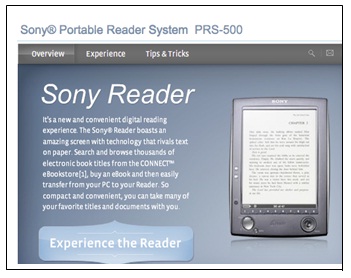Question 1: The following table shows book sales in the U.S. during 2004. With what you know about the impact of the Internet, what are some of the key differences you would expect to see if you had the equivalent table in the year 1994? If possible, support your answer with relevant readings.
|
|
|
|
|
Sales Range
|
Titles
|
Units
|
|
1,000,000
|
10
|
17,396,510
|
|
500K to 1,000,000
|
22
|
13,798,299
|
|
250K to 500K
|
64
|
22,252,491
|
|
100K to 250K
|
324
|
46,932,031
|
|
50K to 100K
|
767
|
51,858,835
|
|
5K to 50K
|
23,047
|
280,000,591
|
|
1,000 to 4,999
|
67,008
|
149,093,614
|
|
100 to 999
|
202,938
|
69,548,499
|
|
Sold 99 or less
|
948,005
|
14,346,417
|
|
Total
|
1.2 million
|
665 Million +
|
Question 2: In the Fall of 2006, Sony introduced a digital reader, capable of synchronizing with your computer like an iPod, downloading books, and serving as a portable electronic book and other media player (shown below). It supports a Sony specific format for digital rights management (BBeB Book), as well as third party and open standard media formats such as unprotected Adobe PDF, Microsoft Word, MP3 (for music), and JPEG, GIF, PNG, and BMP (for images). What are economic reasons that Sony might have for only offering its own proprietary standard for books covered by rights management while simultaneously offering the other standards for unprotected media? Do you agree with their approach?

Question 3: What rows in the Table above would you expect to change the most if the Sony Reader becomes very popular? Justify your answer.
Question 4: How might the pricing policies for Sony eBooks (not the Reader) change if the Sony Reader had thumbprint recognition versus a Reader without such user authentication?